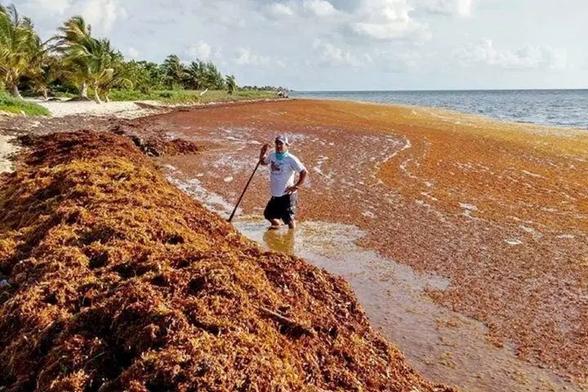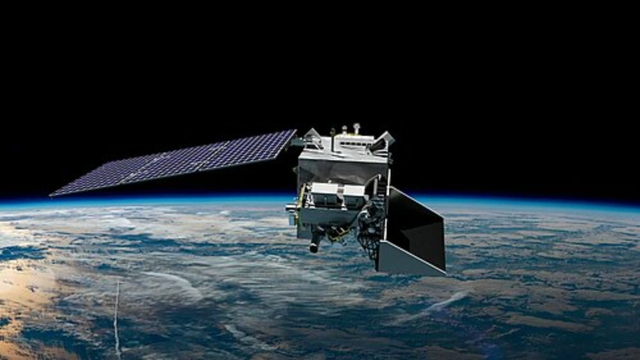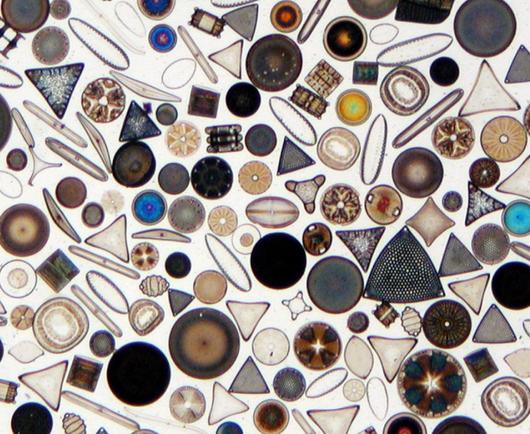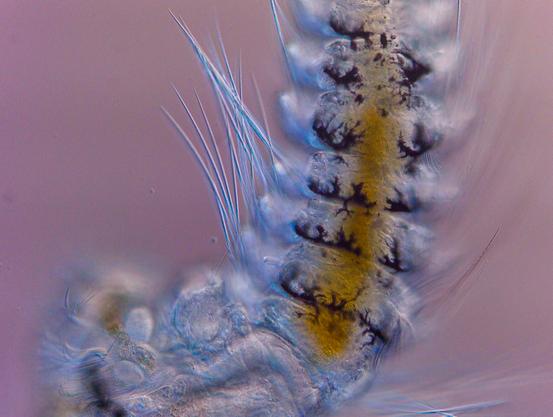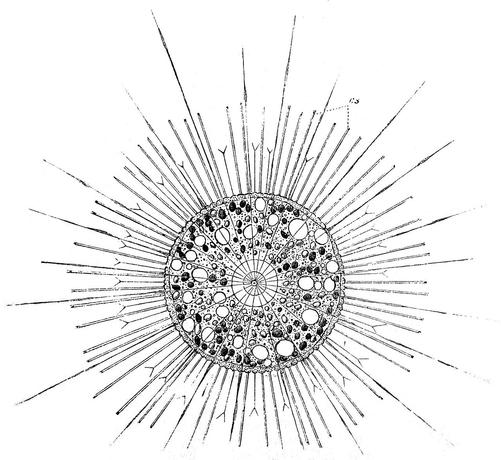#Plankton are organisms that drift in water (or air) but are unable to actively propel themselves against currents (or wind).[1][2] Marine plankton
#Plankton
Weekend #Plankton Factoid 🦠🦐
Tintinnids ("tinkling bells") are ciliates found in fresh and saltwater known for their characteristic vase-shaped shell called a lorica. These are formed of tough proteins, incorporating minerals from the water and vary considerably by species. The shell offers protection and optimizes feeding on phytoplankton, bacteria and flagellates. These small protists are globally distributed and are a vitally important component of the microbial food web.
#science #biology
Weekend #Plankton Factoid 🦠🦐
Since 2011, millions of tons of a brown algae called Sargassum has washed onto beaches in the Caribbean. The rotting seaweed releases toxic hydrogen sulfide, smelling of rotten eggs, impacting tourism and shore access. It was initially thought Saharan iron dust was the cause, but new #science shows changes in upwelling of phosphorus led to increased symbiotic cyanobacteria, which fix atmospheric nitrogen to feed the seaweed.
https://scitechdaily.com/why-is-the-atlantic-ocean-drowning-in-seaweed-scientists-finally-solve-the-mystery/
#ClimateChange
🪼 How the Discovery of Single-Celled Marine Organisms Resulted in One of the Most Influential Illustrated Books Ever Published
#plankton #oceans #marine #life #books #literature #arts #photography #publishing
RE: https://biologists.social/@kofanchen/115531843605919177
Yes, it was a lot of fun to record the parts about early brain #evolution and marine #plankton for this BBC series last year in Ischia, Italy!
Weekend #Plankton Factoid 🦠🦐
Most plankton are tiny, making it very difficult to visualize their internal structures. Enter "expansion microscopy" a technique that embeds the organism in a gel which absorbs water and expands up to 16x, yet retains all of the internal cell details. This means you can view structures normally too small to see with light #microscopy. Cell anatomy can be enhanced by staining. An international team has provided this open-source.
https://doi.org/10.1016/j.cell.2025.09.027
#science
🚨Fully funded PhD opportunity: Physics, biology & ecology of toxic dinoflagellate blooms 🦠.
Supervisory team from Newcastle university (main supervisors), the University of Stirling and Lancaster University.
Join us to investigate how swimming motility and the flexible utilisation of energy sources influence bloom formation, using experiment🔬and modelling ♾️. #microswimmers #plankton #biophysics #biology #ecology #ActiveMatter #PhD
Please repost
Project details: https://iapetus.ac.uk/studentships/physics-biology-and-ecology-of-toxic-plankton-blooms/
NASA’s #PACE (#Plankton, #Aerosol, Cloud, ocean Ecosystem) mission was launched in February 2024 to study Earth’s oceans and atmosphere and the impact of the tiny things therein.
https://knowledgezone.co.in/trends/browser?topic=NASA-PACE-Mission
Weekend #Plankton Factoid 🦠🦐
Velella velella is the by-the-wind sailor, a type of floating colonial siphonophore, almost like a tiny version of portuguese man-of-war. It is often found in large numbers on beaches because they have a "sail" set at 45° either to the left or right. As a result, they can sail differently depending on wind direction. It is thought both forms are mixed mid Pacific Ocean and are sorted by the wind, some going to the Americas and others to Asia.
#science #biology
Understanding the origin of modern calcareous #plankton is a challenging exploration. They are small, the #rocks they are in are not that common, and the rock-forming processes tend to dissolve them, so sometimes, to look for them - we hunt for their ghosts👻.
Link: https://www.nature.com/articles/s41467-025-65116-0
Weekend #Plankton Factoid 🦠🦐
The poles are cold and dark half the year, so you might think these areas were low productivity. Nope. These are some of the highest productivity and efficient food webs on the planet, which is why whales will travel half the globe to feed here. When sunlight returns in spring, long days and nutrients drive intense blooms. There was a question of nutrient sources, but now we know that some nitrogen is provided by bacteria.
https://scitechdaily.com/we-were-wrong-scientists-find-hidden-phenomenon-that-could-trigger-marine-life-boom/
#Climate #Science
#WeekendReading: Ziveri et al. about different calcifying #plankton (coccolithophores, foraminifera, pteropods) move around carbon between different pools in the #ocean and how they might interact with long-term #ClimateChange.
#Plankton lebt echt hinter'm Mond…
Valtamerten väri haalistuu – ilmiöllä valtava vaikutus maapallon tulevaisuuteen https://yle.fi/a/74-20189114?origin=rss/Mastodon
Weekend #Plankton Factoid 🦠🦐
You've likely watched a police procedural where the lab states the drowning was suspicious because of algae. The shells of diatoms have long been used in forensic #limnology because they are made of glass, so preserve very well. #Diatoms are very diverse and can be indicative of specific conditions in waterbodies, though unlike on TV, we scientists don't have a database of detailed locations to immediately identify a murder site. 🥼
#science
https://simplyforensic.com/how-do-diatoms-aid-forensic-science-in-solving-a-crime/
Plankton sketch card for Topps Chrome 2025 Spongebob Squarepants 25th Anniversary. Now available in stores!
#spongebobsquarepants #plankton #cartoon #Topps #toppschrome #nickelodeon #sketchcard #sketchcards #toppstradingcards #toppscards #tradingcard #tradingcards #fanart #art #artwork #drawing #traditionalart #ink
If anyone on here knows how to ID polychaete larva, I’d love to work with you on getting to the species level on these worms I always find in Boston harbor. I could provide a ton of photos, if I knew what to image for an ID. I know they are spionid but that’s it. #sciart #microscopy #plankton
Polychaete larva cilia currents in timelapse. #sciart #microscopy #plankton
Weekend #Plankton Factoid 🦠🦐
Heliozoans are a group of amoeboid protists found commonly in both fresh and saltwater. They were termed sun-animalcules due to their spherical shape and distinctive radiating microtubules, which support axiopods used to capture food and facilitate movement. Some will also capture symbiotic algal cells which provide energy through photosynthesis. Heliozoa is "polyphyletic", meaning it is an artificial grouping of multiple taxonomic lines.
#Science #Biology
10-Oct-2025
Tiny architects, titanic #climate impact: scientists call for October 10 to become #InternationalCoccolithophoreDay
Microscopic #plankton that regulate Earth’s climate and sustain ocean ecosystems take center stage in a new awareness campaign
https://www.eurekalert.org/news-releases/1101119
#science #Coccolithophores #ecology #microbiology #MarineBiology

